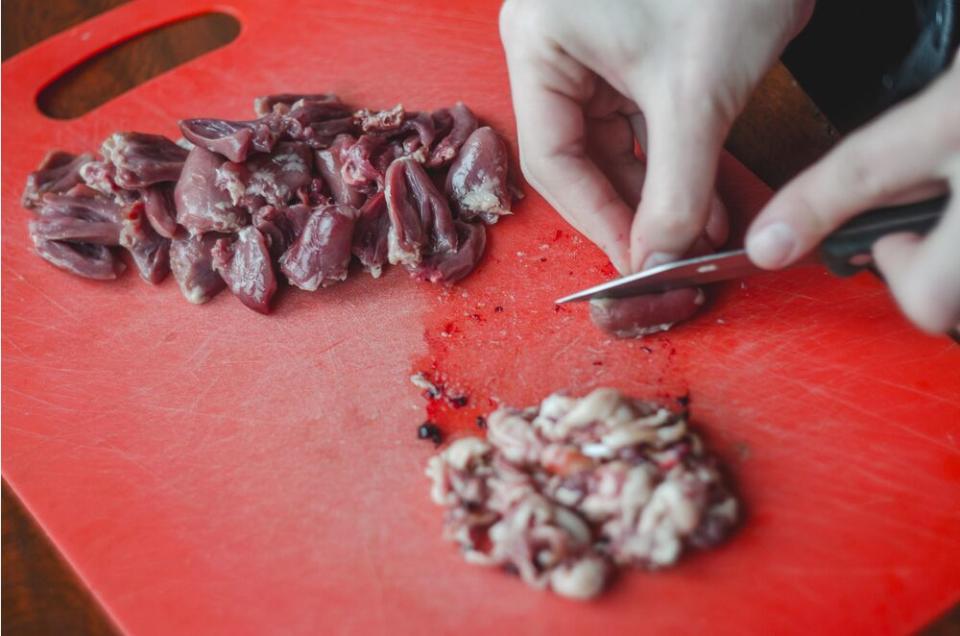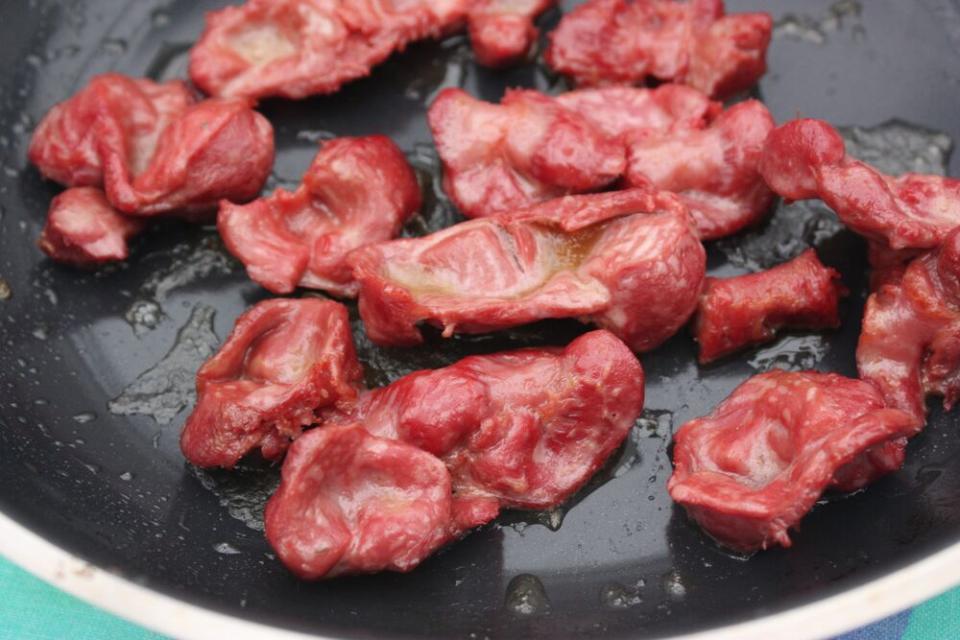What Are Chicken Gizzards and How Are They Different From Giblets?
Here’s the chicken gizzard guide you never knew you needed:
What Are Gizzards?

Gizzards are organs found in the digestive tracts of some animals, including archosaurs, earthworms, gastropods, some fish, and some insects.
Unless you’re a paleontologist, you may be wondering, “Wait … what the heck was that first word?”
Archosaurs are a group of animals broadly classified as “reptiles.” This includes dinosaurs (the Jurassic Park kind), crocodiles, alligators, and birds (yes, birds are actually reptiles).
The gizzard is basically a stomach made of strong, thick muscular walls. These walls grind up food that the animal eats.
Gizzards are aided in their grinding by small particles of stone and grit. When you see a chicken pecking at the ground, they’re actually swallowing pieces of gravel and dirt that will lodge itself in its digestive tract.
When the food eventually comes down the pipe, the strong muscle contracts and uses the gritty pieces to grind the food. The ground food passes on to the stomach, where it’s digested.
Related: What Are Chitlins and What Are They Made Of?
Gizzards as Food
Gizzards (usually from chickens) are cooked and eaten in cultures all over the world.
They’re a popular street food in Haiti and throughout Southeast Asia, where they’re grilled. They’re also commonly found fried in Indonesia and Japan, stewed in Portugal, and broiled in Africa.
In the U.S., chicken gizzards are often served fried with hot sauce—especially in Southern states. It’s also used in some gumbo and crawfish boil recipes.
Head a little farther north to the Midwestern U.S., and you’ll find pickled turkey gizzards are part of the traditional cuisine. In fact, there’s an annual Gizzard Fest (complete with a gizzard-eating contest) in Potterville, Michigan.
Gizzards vs. Giblets

A gizzard is always a giblet, but a giblet doesn’t have to be a gizzard. Confused? Let’s break this down:
“Giblets” refers to various organs found inside the cavity of a bird. These usually include the heart, the liver, the neck, the kidney(s), and the gizzard.
What Do They Taste Like?

Chicken gizzards taste kind of like dark meat chicken. Since it’s a powerfully strong muscle, it’s a bit tough and chewy.
It’s for this reason that they’re a slightly divisive cut of meat—some people can’t get enough of the texture, but others can’t stand it.
Nutrition
Love ‘em or hate ‘em, the gizzard is one of the healthiest parts of the chicken. Here’s why:
It’s super high in protein. Just one chicken gizzard will fulfill almost 90 percent of your recommended daily intake (RDI) of protein.
Gizzards are a good source of vitamins. One serving fulfills 25 percent of your RDI of B12, which helps prevent anemia and is important for brain function.
Despite their high protein and vitamin content, gizzards are low in fat. Win-win-win.
Where to Buy Chicken Gizzards
Chicken gizzards, along with other chicken giblets, can be found at your local grocery store or butcher shop.
The gizzards you buy at the grocery store are already clean.
If you’re purchasing from a butcher or chicken farmer, ask if they’ve been pre-cleaned. If they haven’t, see if they can do it there for an extra fee—you can do it at home, but it’s kind of gross.
How to Clean Chicken Gizzards
WATCH: 5 Raw Chicken Mistakes to Avoid
If you made it home with dirty gizzards, get ready to roll your sleeves up and scrub.
First thing’s first: Before you unpackage your gizzard, get out everything you’ll need for the cooking process and after, from cutting boards to cleaning products. Just like other uncooked chicken parts, gizzards can carry salmonella. Setting up your work station before the chicken even enters the equation will minimize the spread of germs around your kitchen.
Cut the gizzard in half with a sharp knife.
Rinse the exterior and interior of the gizzard. Remember, this organ works with gravel and dirt to grind food, so there’s going to be a lot of unpleasantness in there.
Open up the folds and use your fingers to locate and discard any debris the running water may have missed.
Once the gizzard is completely clean (and we mean completely—it’s not safe to half-ass this step), peel away the whitish-yellow lining. If it doesn’t easily pull away, use scissors to trim the lining from the flesh.
How to Cook Chicken Gizzards

Cook chicken gizzards slowly over low heat. This will ensure that the tough connective tissue melts away, instead of tightening up and making your gizzards way too chewy.

 money
money 